Another great weekend trip for the books! On Saturday, we took the bus up to Northern Ireland for a jam-packed few days of museum visits, scenic walks, and historical tours. We started in Belfast, stopping first at the Titanic museum. I was super excited for this first stop, because I have heard raving reviews about this particular Titantic Museum. When I was younger, I had a slight (maybe not so slight) obsession with everything Titantic related. Whether it was books about the individuals on the ship, facts about the event, documentaries, or museums, I could not get enough. The obsession went so far as dragging my mom to a Titantic museum in Branson, Missouri (still unsure why there is a Titantic museum in Missouri) on my off day during a dance competition. So being able to come to one of the best and most popular museums on the topic, located right where the ship was built, made me feel like I was my 12-year-old, Titanic-obsessed child again.
Surely enough, the museum did not disappoint. It was massive; four-floors filled with different artifacts, models of the outside of the ship and the interior, personal letters and accounts of survivors, and even a ride that showed what it was like to be in Belfast while the ship was being built. Although it wasn’t the flashiest part, my favorite room was the one that explained all the issues that caused the Titanic to sink, and the precautions and policy changes made in the nautical world to ensure it never happens again. I did not realize how many situations played into the disaster that occured, and it made me feel at ease to see all the actions taken since then (Titantic museums always make me anxious to go on boats so props to them for putting it at the near-end of the exhibit).
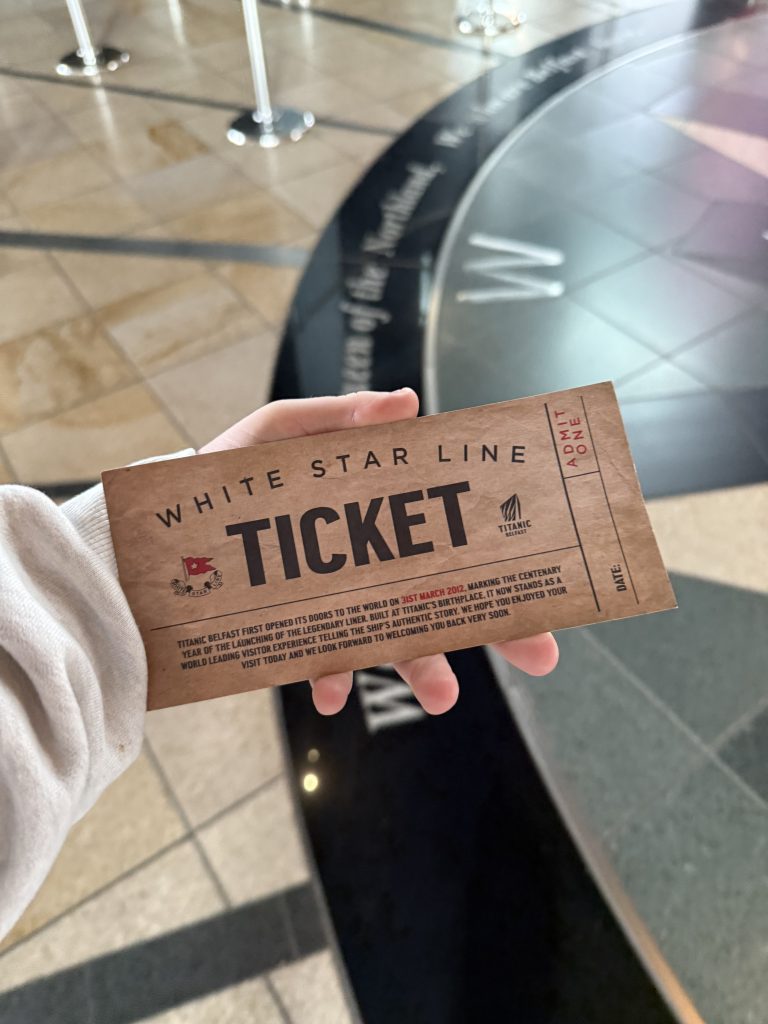
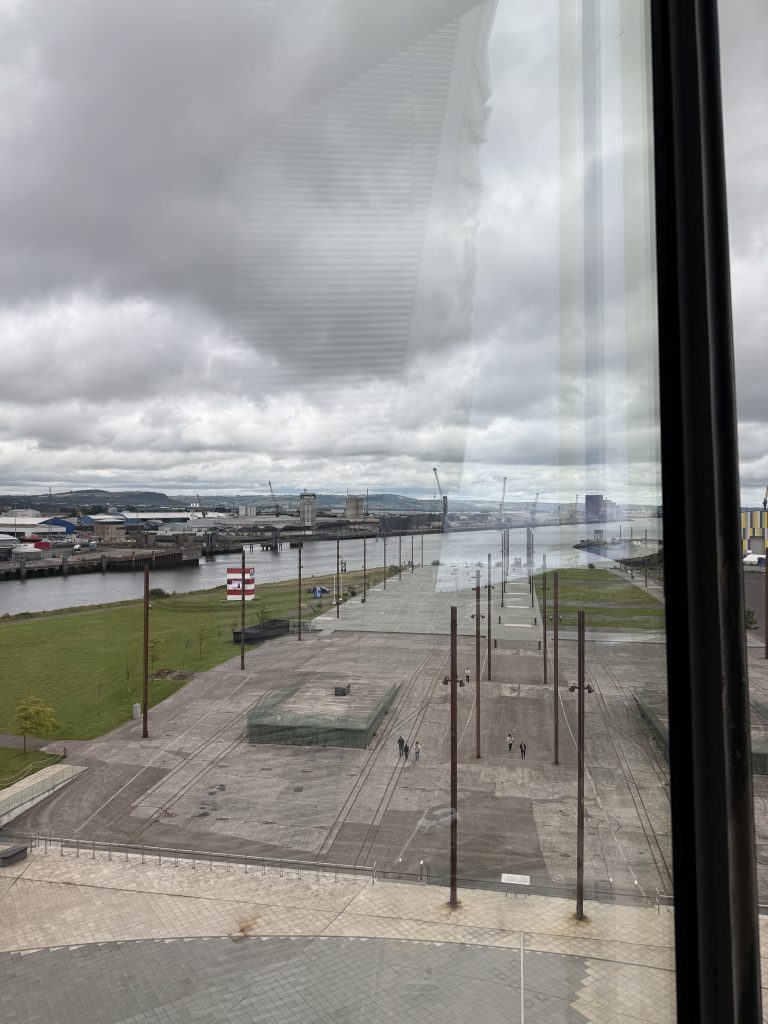
The other room that was very cool was a big screen of all the individuals who were on the ship. I ran into Ivy at the perfect time, because she pointed out a familiar name on the screen: Mrs. Emma Eliza Bucknell. As probably obvious by the name, she was married to William Robert Bucknell, the namesake of our university. It felt surreal to be on a trip with Bucknell and suddenly feel connected to a Titanic survivor.
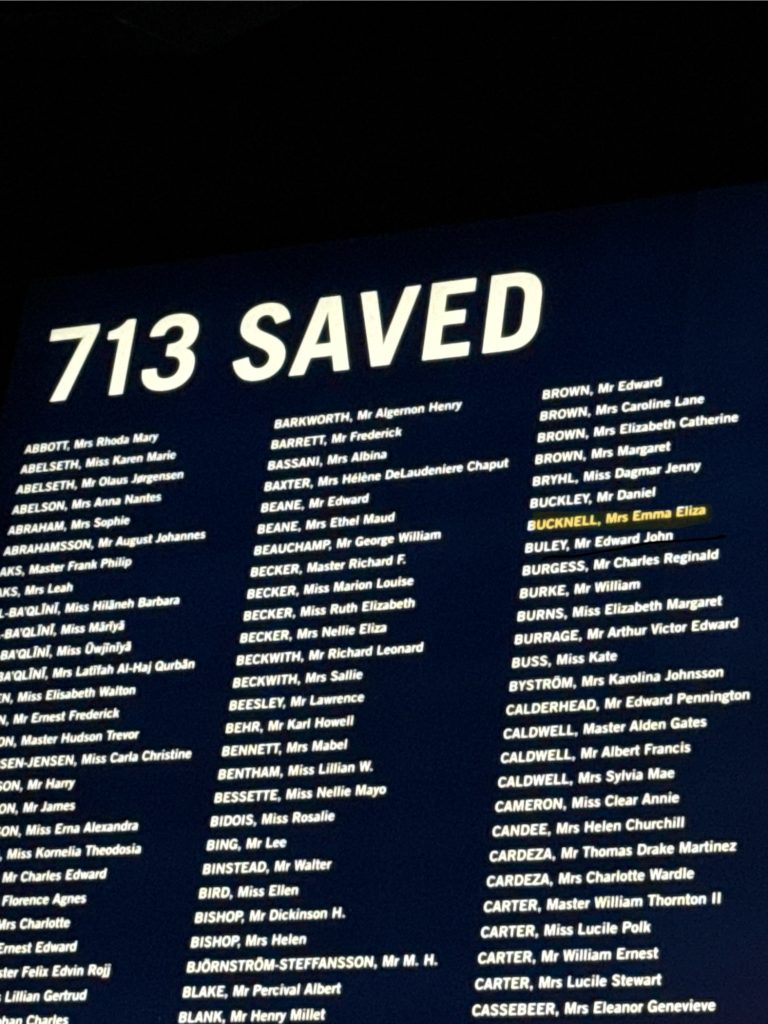
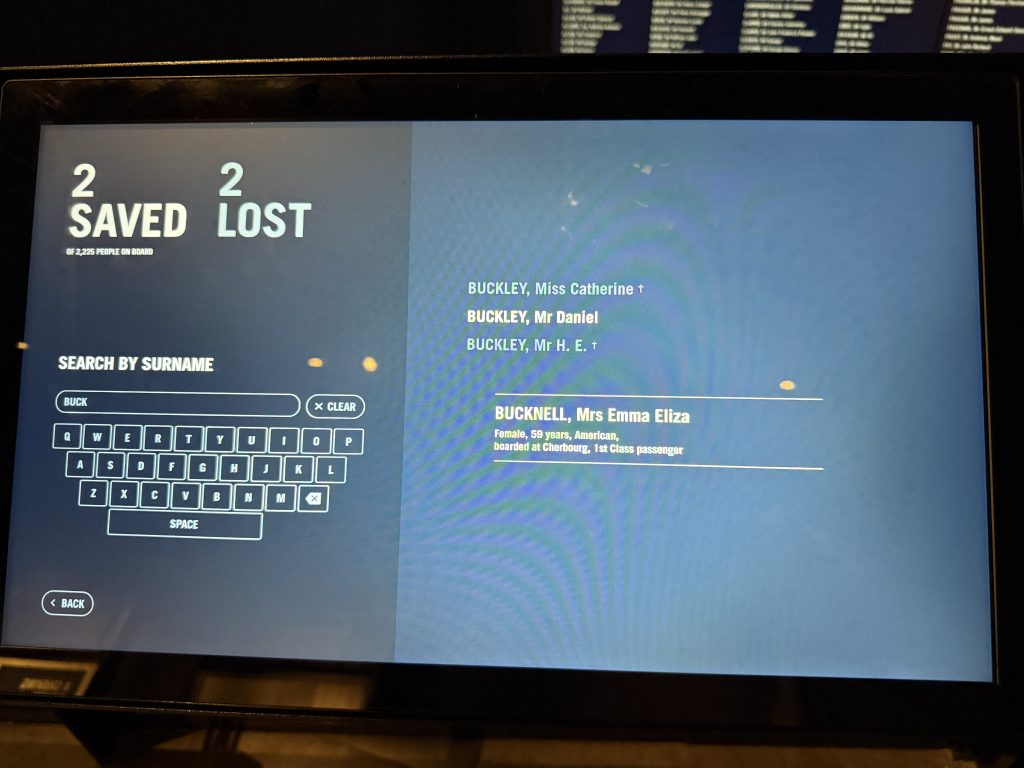
After the Titanic Museum, we took a Black Taxi tour of Belfast, where we learned about the Troubles and the city’s ongoing peace efforts. This was another event I have been looking forward to on the trip, because I learned a lot about the situation and was curious to see what the communities that live on both sides of the peace wall. One of my favorite teachers in high school wrote her dissertation on the Troubles, where she lived in Northern Ireland right after the Good Friday Agreement. Her stories of living in Northern Ireland at the time and what she learned were incredibly facinating, so getting to see the neighborhoods for myself was very impactful.
The tour featured the murals that served as testiments of the struggles and resilliance of the communities during the 30-year conflict between Catholic and Protestant sides of Belfast. The guides, all of whom grew up in West Belfast, shared personal memories connected to the murals and parks we visited. These lived histories made the tour the most impactful part of the trip for me. I feel incredibly fortunate to have experienced such a powerful and personal perspective on a chapter of history that still shapes the city today.
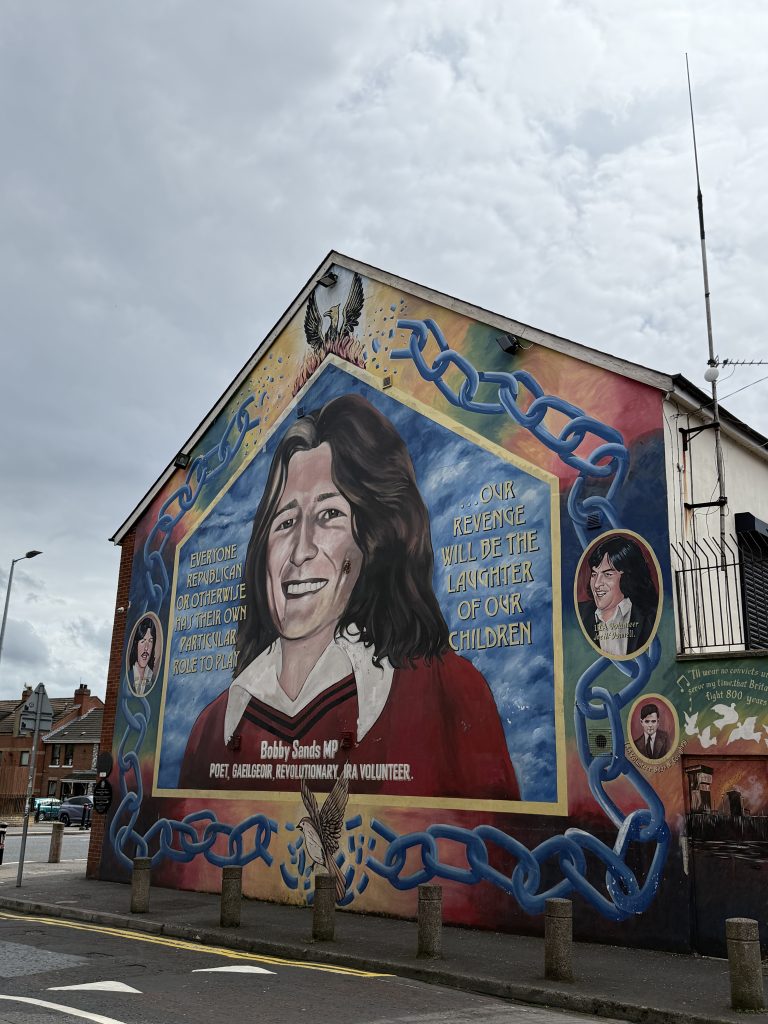
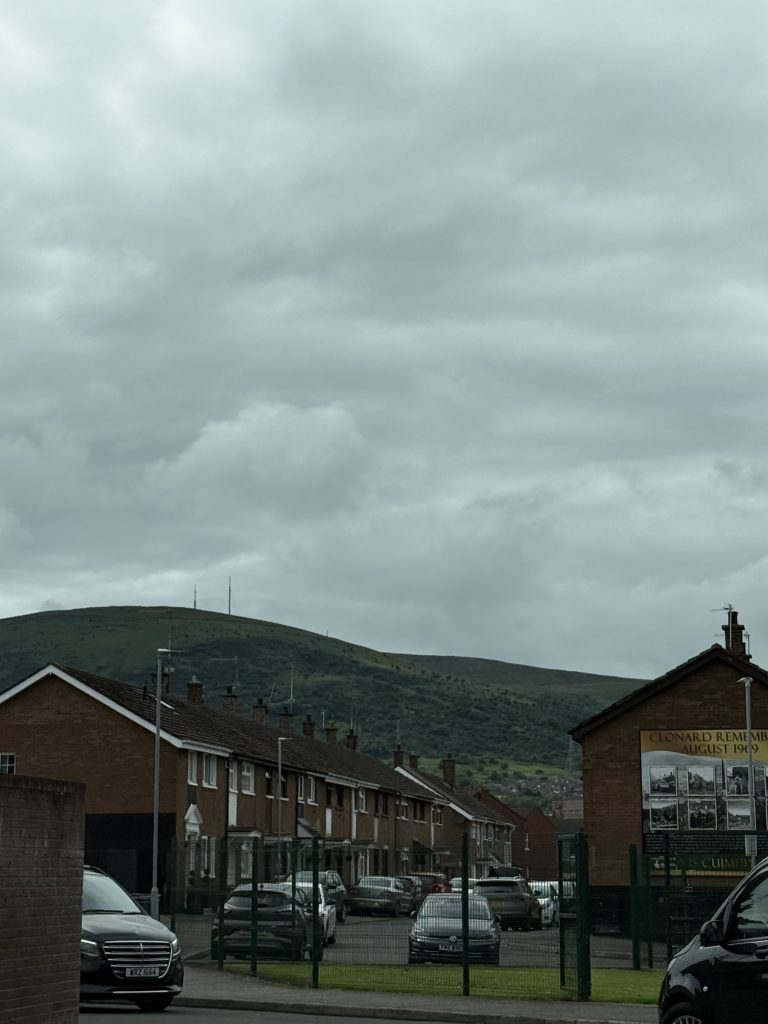
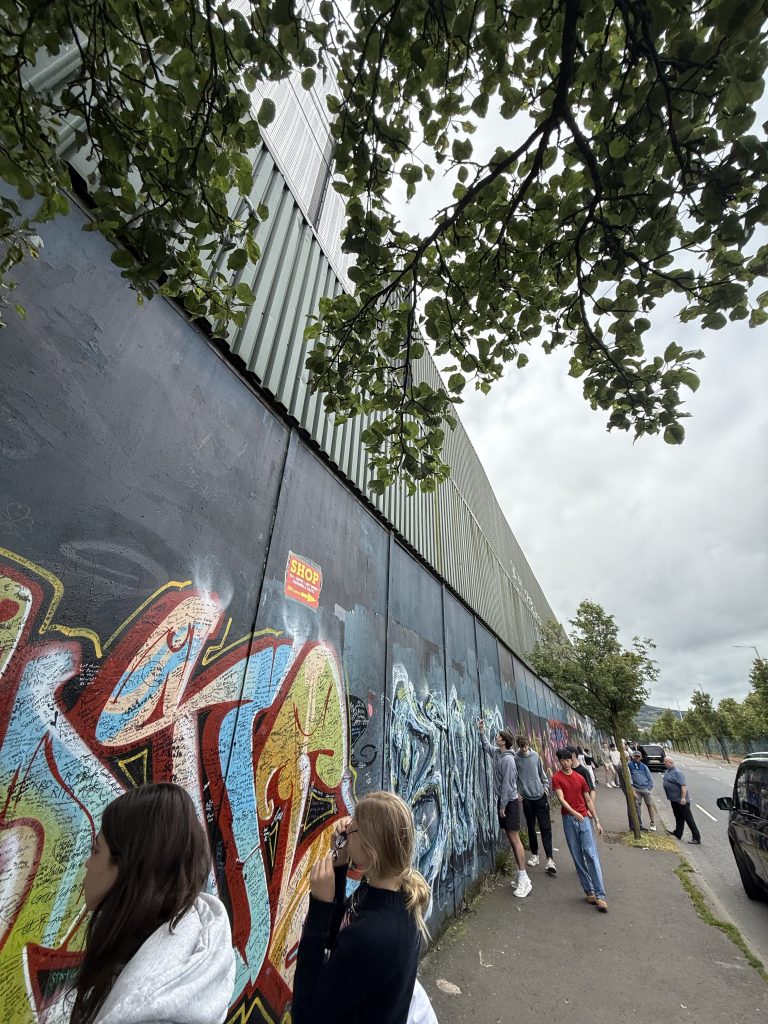
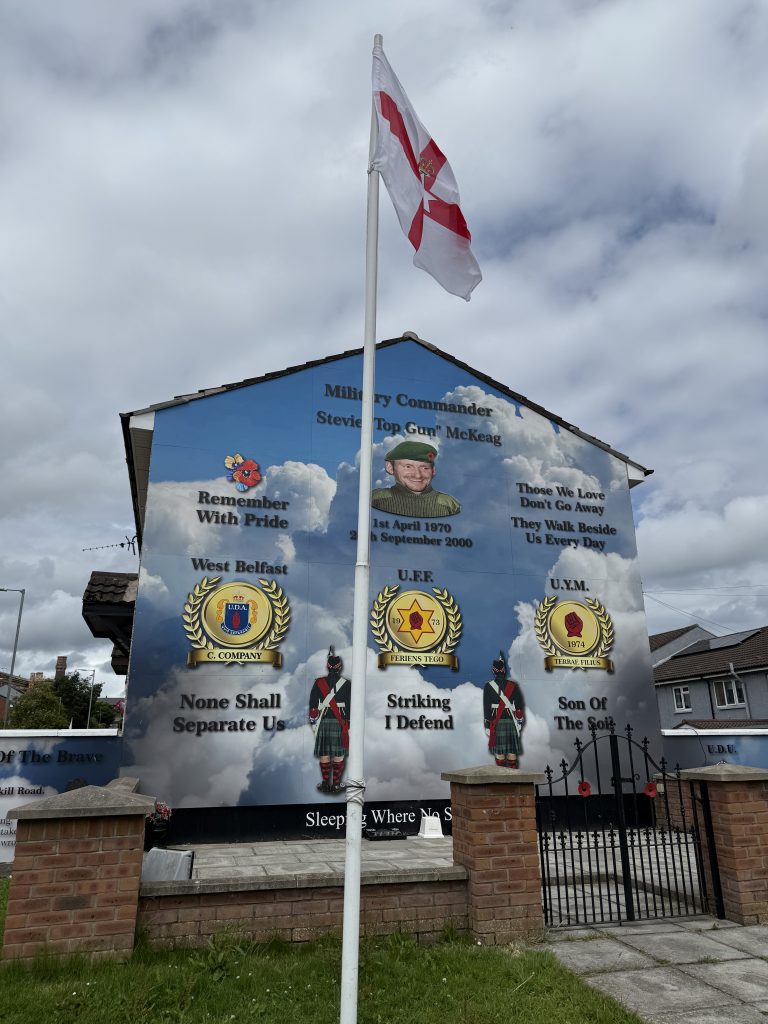
After a long day of museum visits and historical tours, we headed back to our hotel room to get ready for dinner. I made a reservation at the restuarant Flame, which did not disappoint. We were all super hungry by the time we got to dinner, so I enjoyed a steak and lemon tart (my favorite) to wrap up the night. The restaurant was beautiful, with a really cool bar, decor, and cocktail menu.
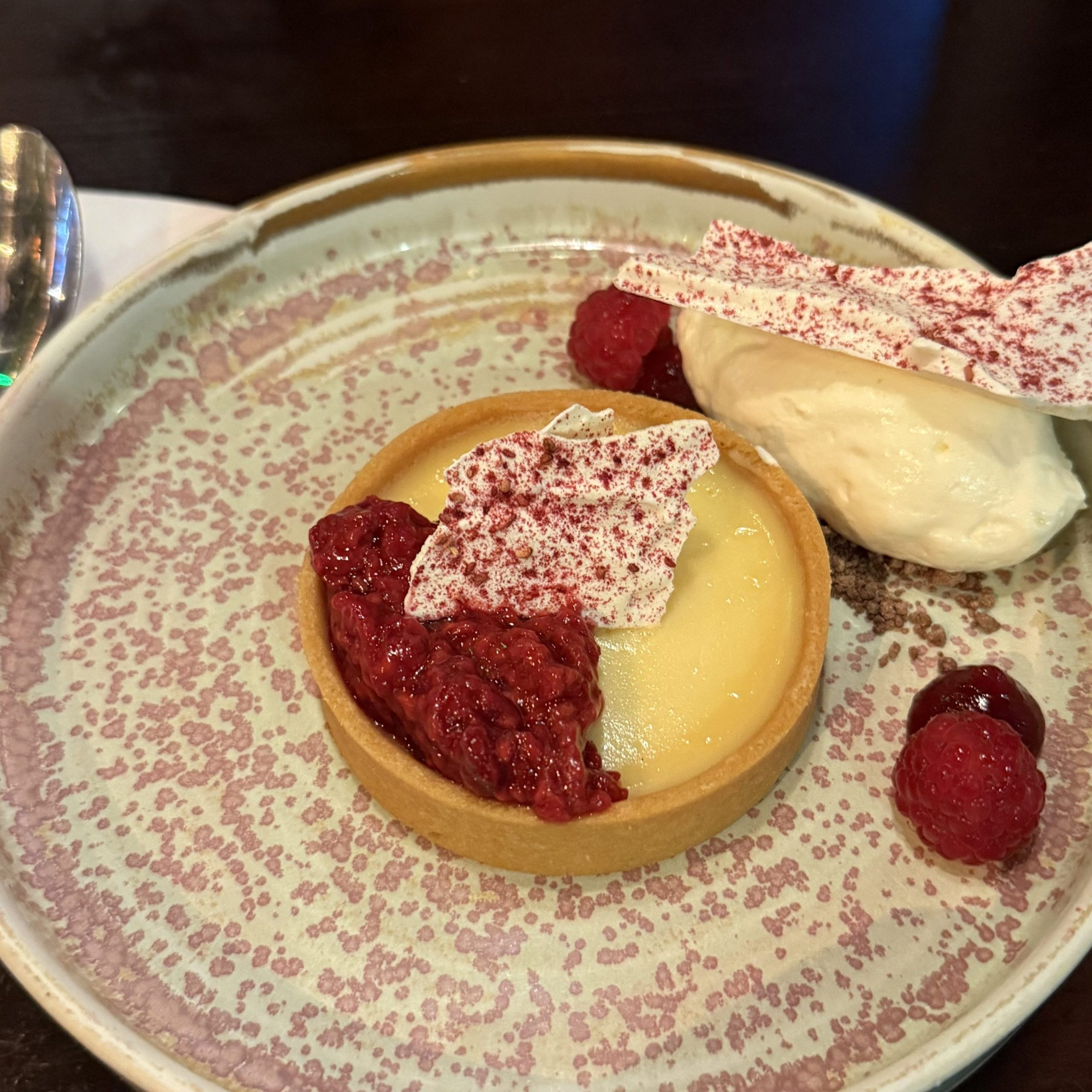
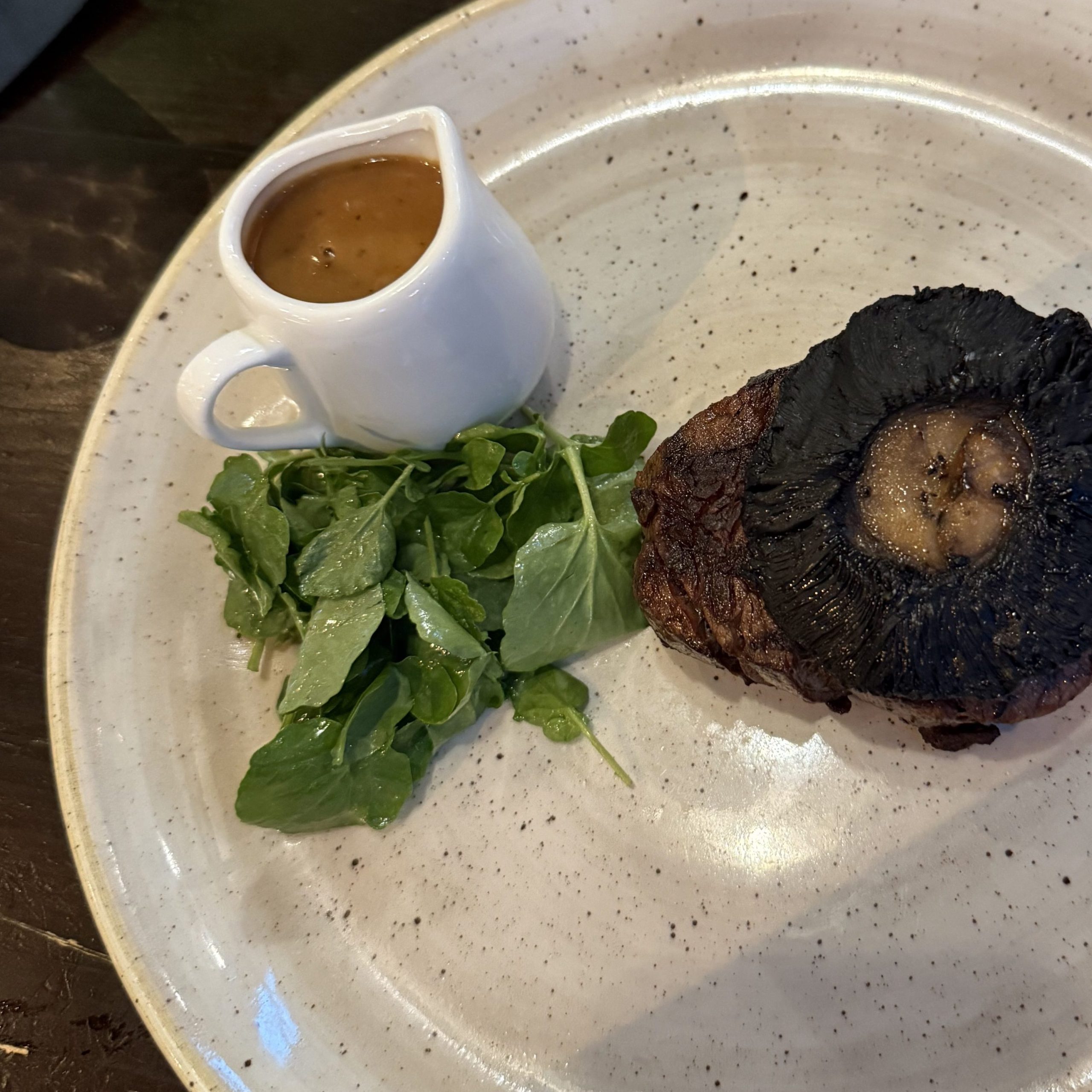
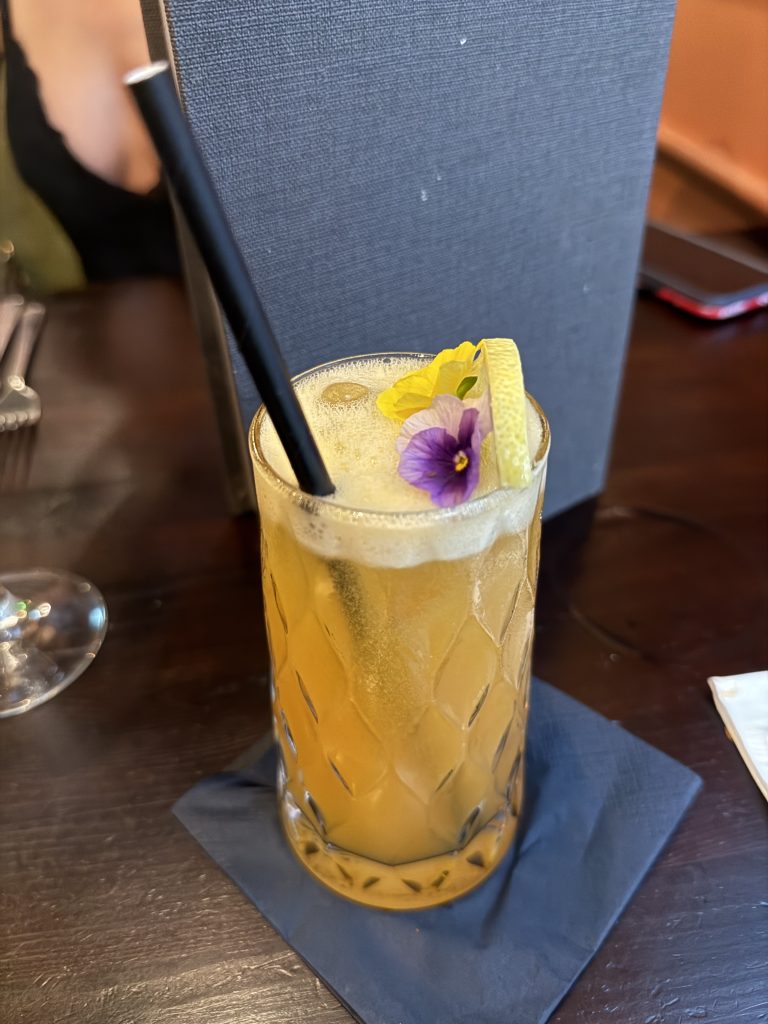
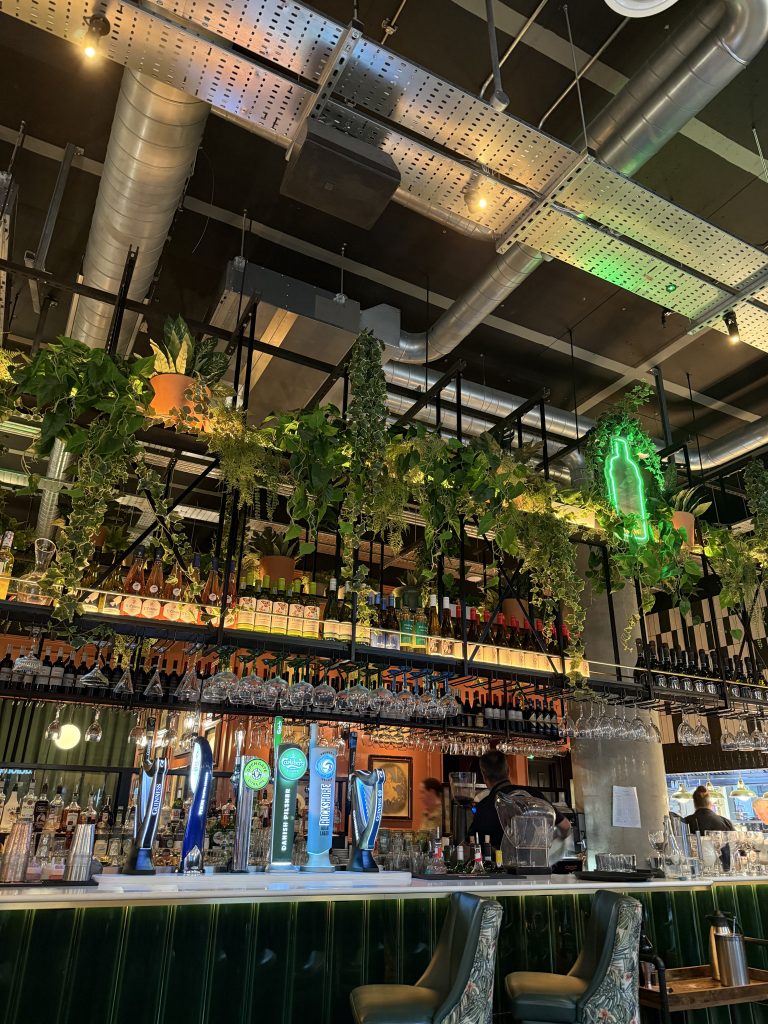
The next day was a bit different from the last, as our itinerary focused on soaking in the natural beauty of Northern Ireland and befriending baby sheep. We started the day off with a short hike to Carrick-a-Rede Rope Bridge, which featured clear, beautiful blue water and breathtaking cliffs. The sky was fairly overcast, but the cool breeze and the way the clouds met the horizon made for some truly lovely scenery. I faced my fear of heights by crossing the rope bridge, though there’s no photo evidence, since both of my hands were fully committed to a death grip on the ropes the entire way there and back.
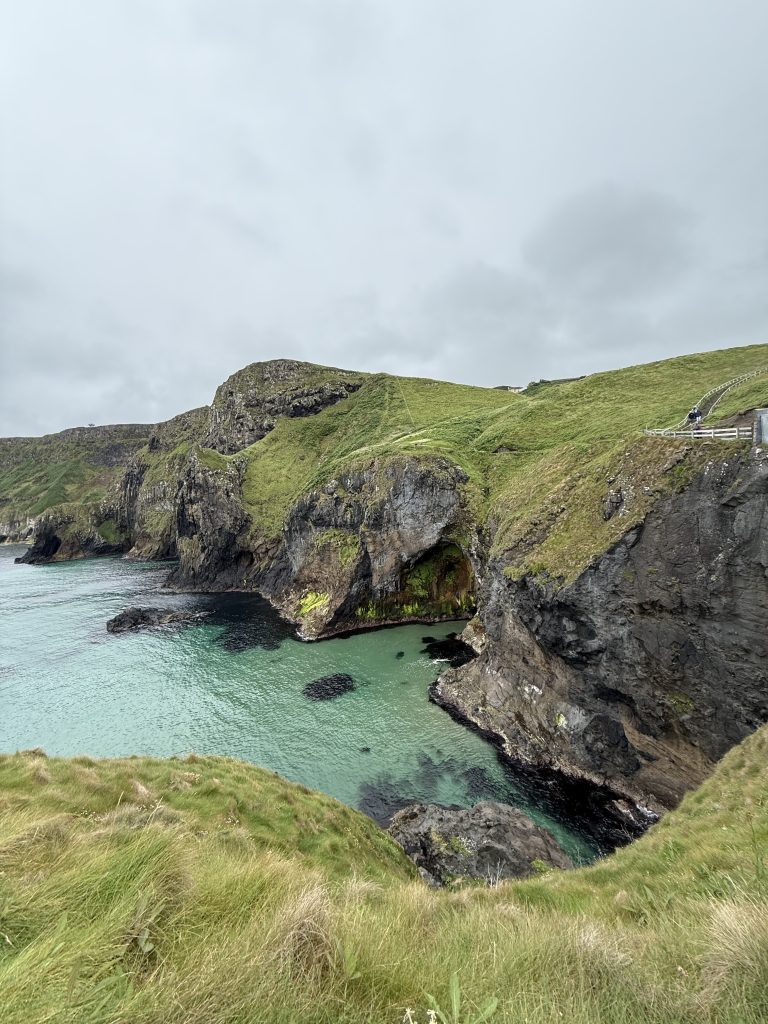
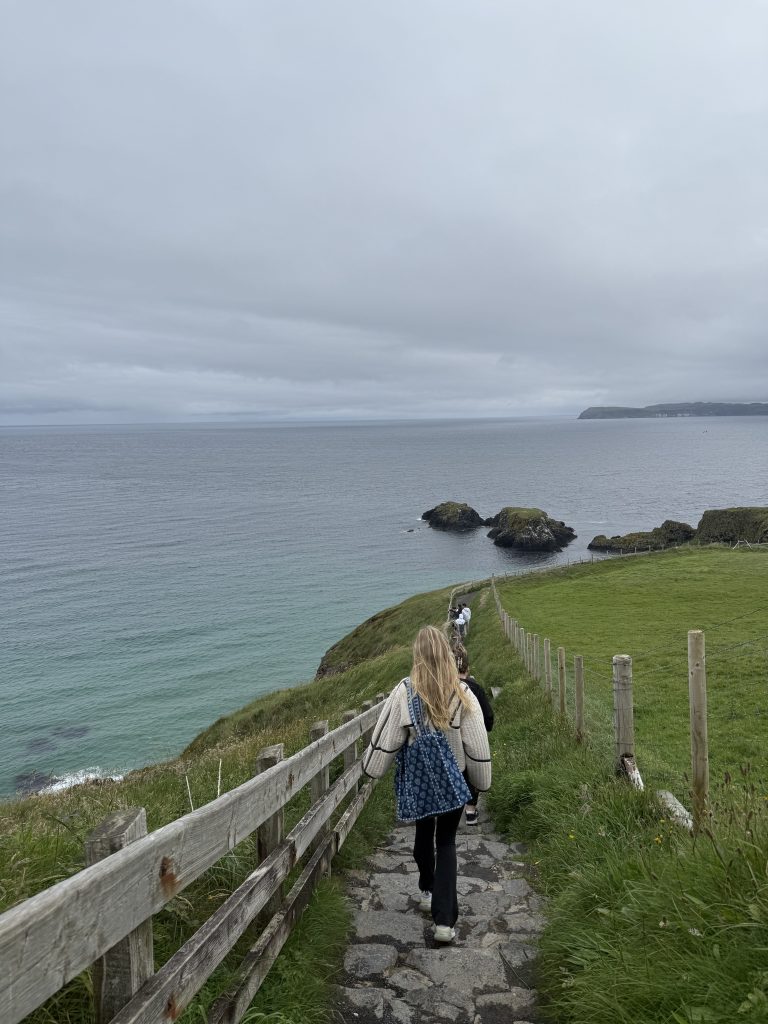
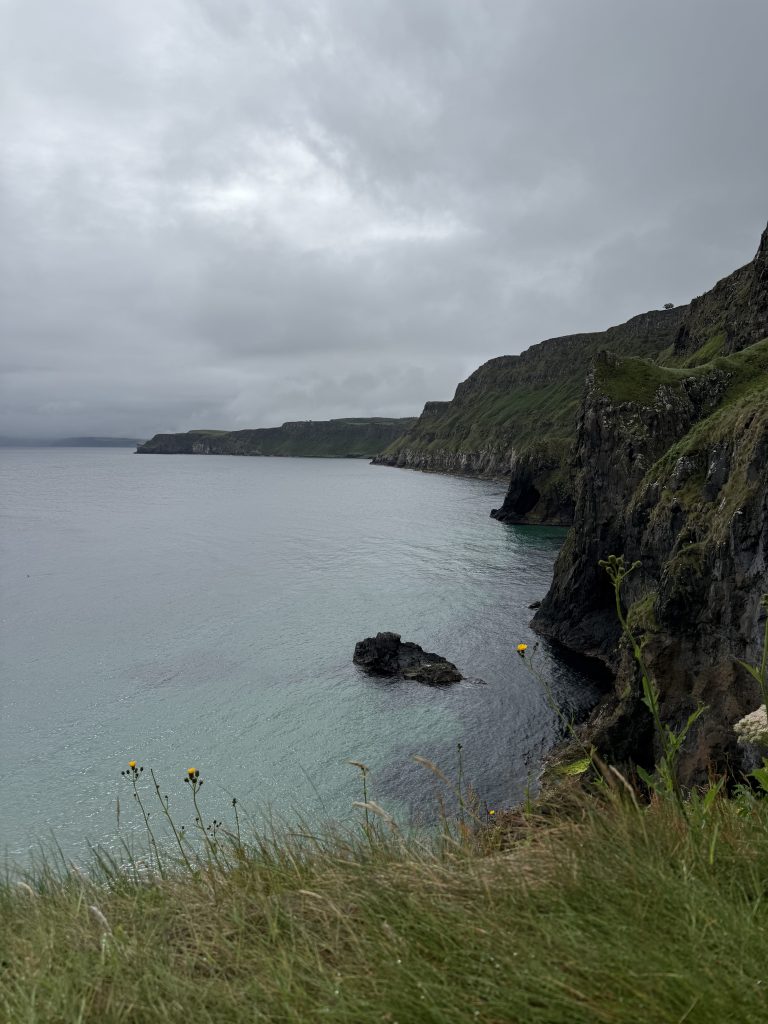
We continued our day of stunning walks along the water by stopping at Giant’s Causeway, a UNESCO World Heritage Site known for its beauty and geological wonder. The coast contains 40,000 interlocking basalt columns formed by an ancient volcanic fissure eruption (well that or by an Irish giant). The tour guide was very engaging, speaking about how the Causeway has evolved, what it was like living there his entire life, and the legend (and alleged evidence) on how it was formed by a giant. The legend of the causeway is that giant, Finn McCool, created the causeway to get across the Irish Sea to face his rival, the Scottish giant Benandonner. After Benandonner came to Ireland and was tricked by Finn McCool and his wife, he fled and ripped up the causeway on his way back to Scotland. Normally, I’d side with the geologists and their explanation of its formation, but the tour guide almost had me convinced.
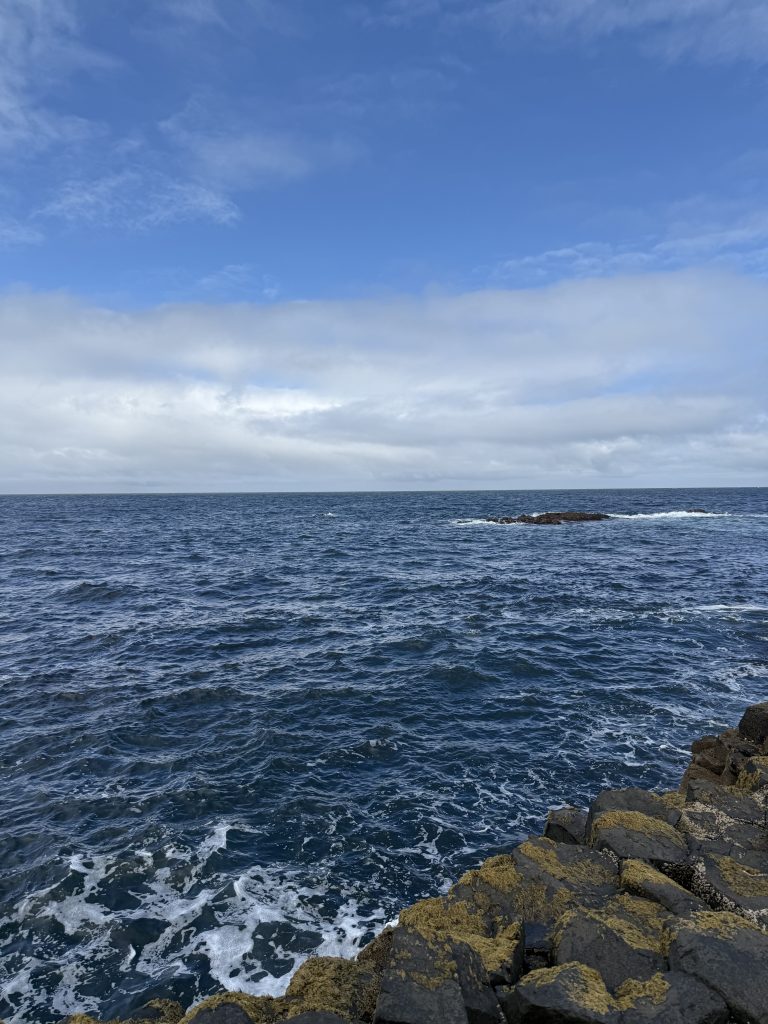
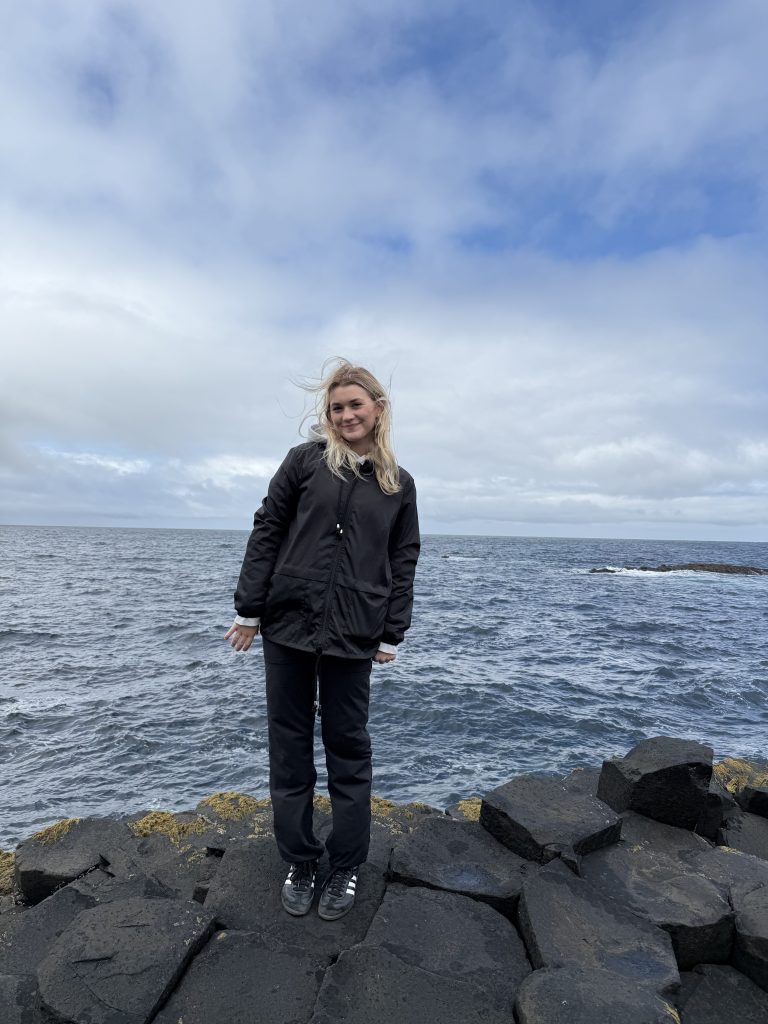
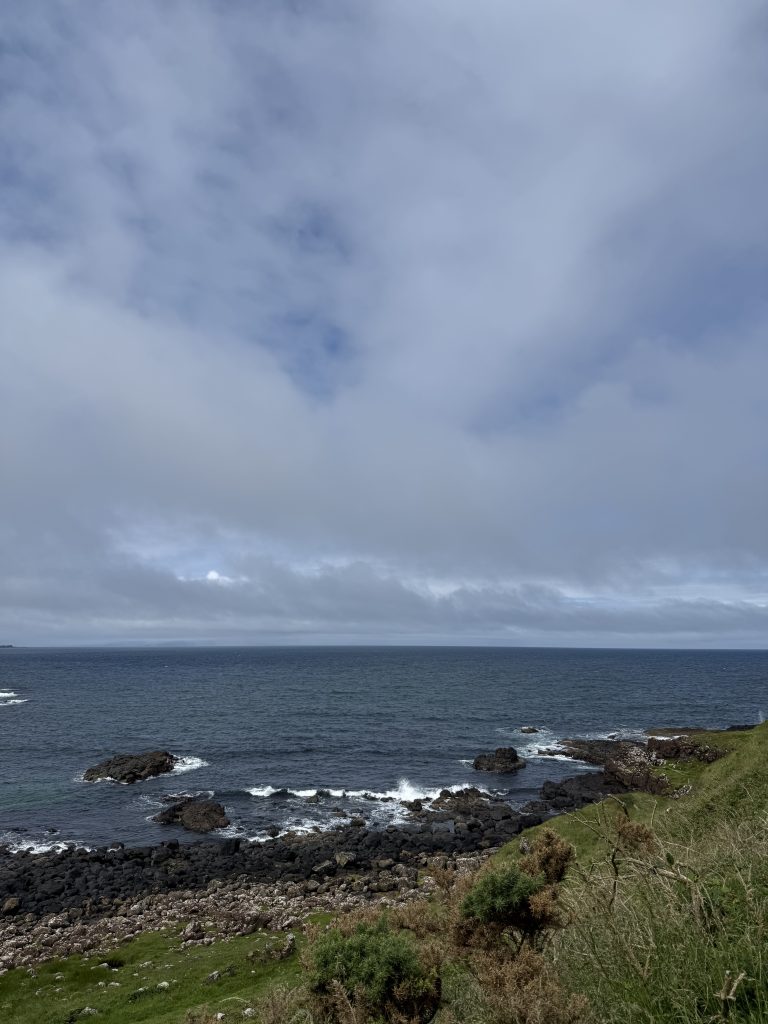
The final stop of the day was my favorite part of the trip! We visited a farm where we got to see how trained dogs herd sheep and tour the different areas housing sheep and rams. We learned that the farm sometimes has over 600 sheep! There was a fascinating demonstration showing how the dogs respond to different commands to move the sheep across the pasture. The dogs, Jess and Tess, were incredibly intelligent, each trained with specific commands, some in English and others in Irish. This allows the shepherd to communicate with them individually and direct them to different tasks. Each dog also has unique whistle commands. Although the whistles sounded similar to me, the dogs could distinguish the subtle differences and responded only to their own.
After the demonstration, we went into the barn to see more of the animals. There were so many different sheep breeds, each with unique coats, faces, and sizes. After learning about the various types of sheep, we were taken to another section of the barn to meet some baby sheep! There were about five or six lambs, ranging in age from a week to a few months old. They were absolutely precious and loved being held. Some even nuzzled into my neck to rest their little heads.
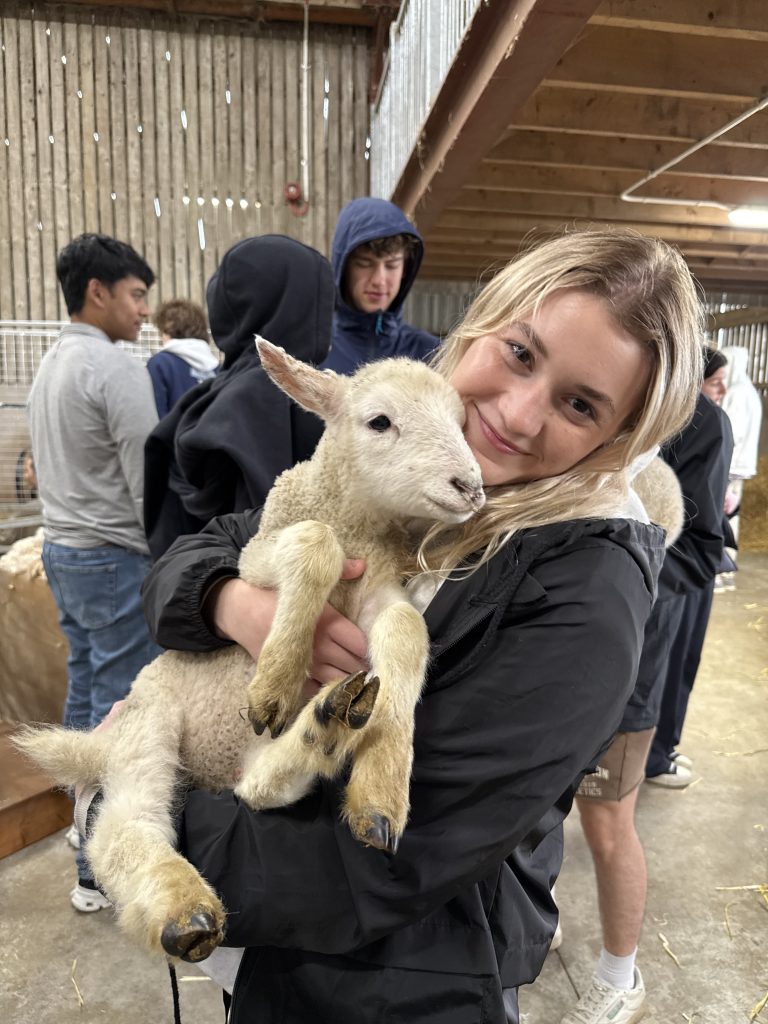
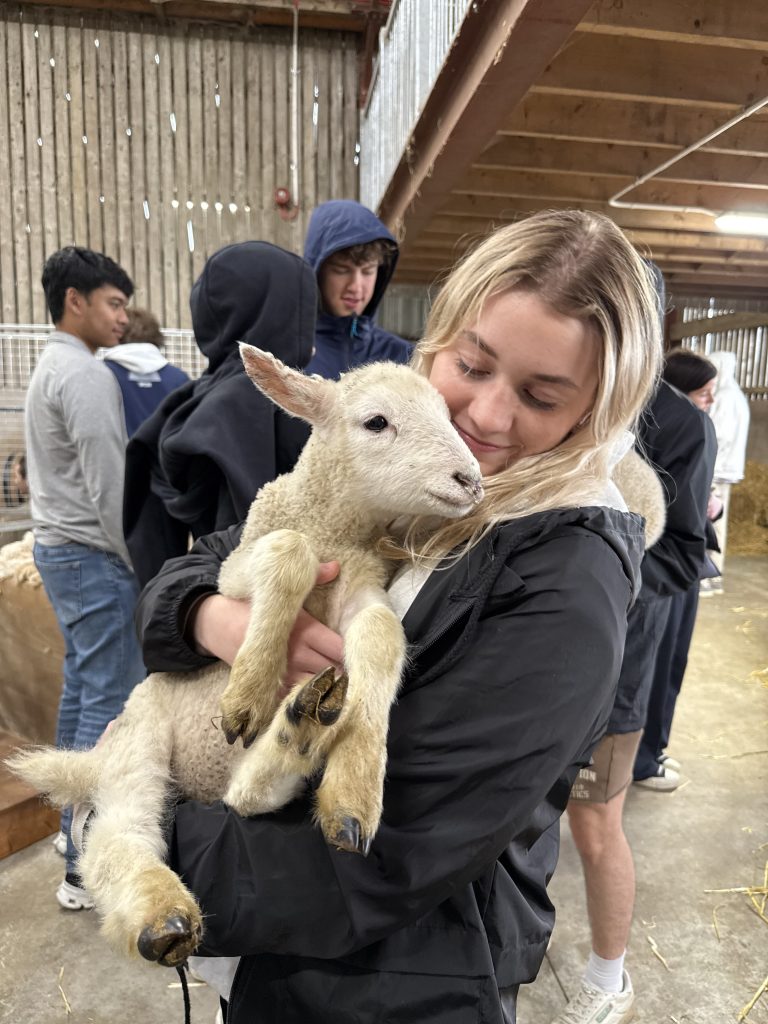
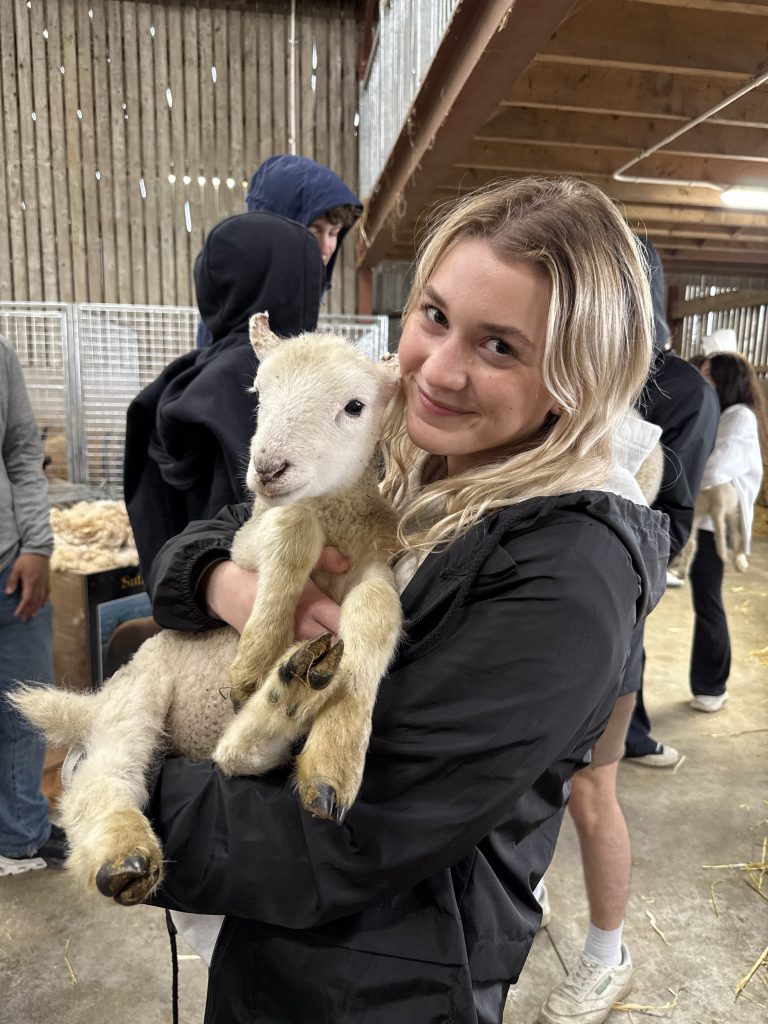
They are the most perfect creatures ever and I really want one, but someone reminded by that lambs grow up into adult sheep (thanks for ruining my dreams, Colin) and I don’t think I am ready for that responsibility yet.
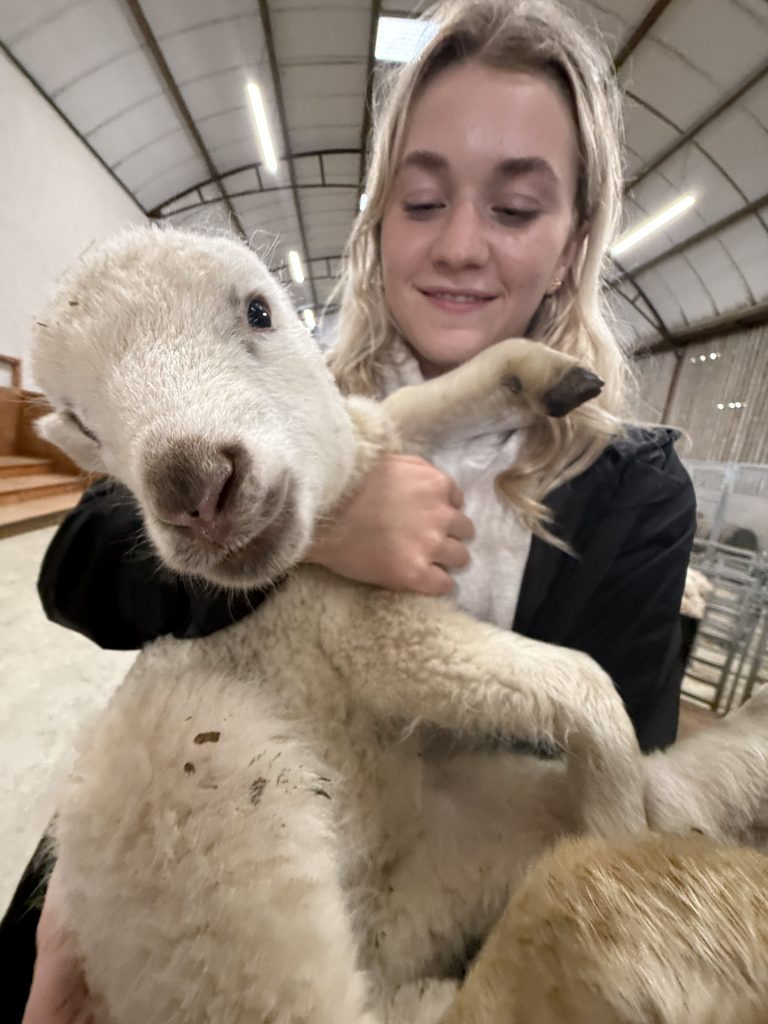
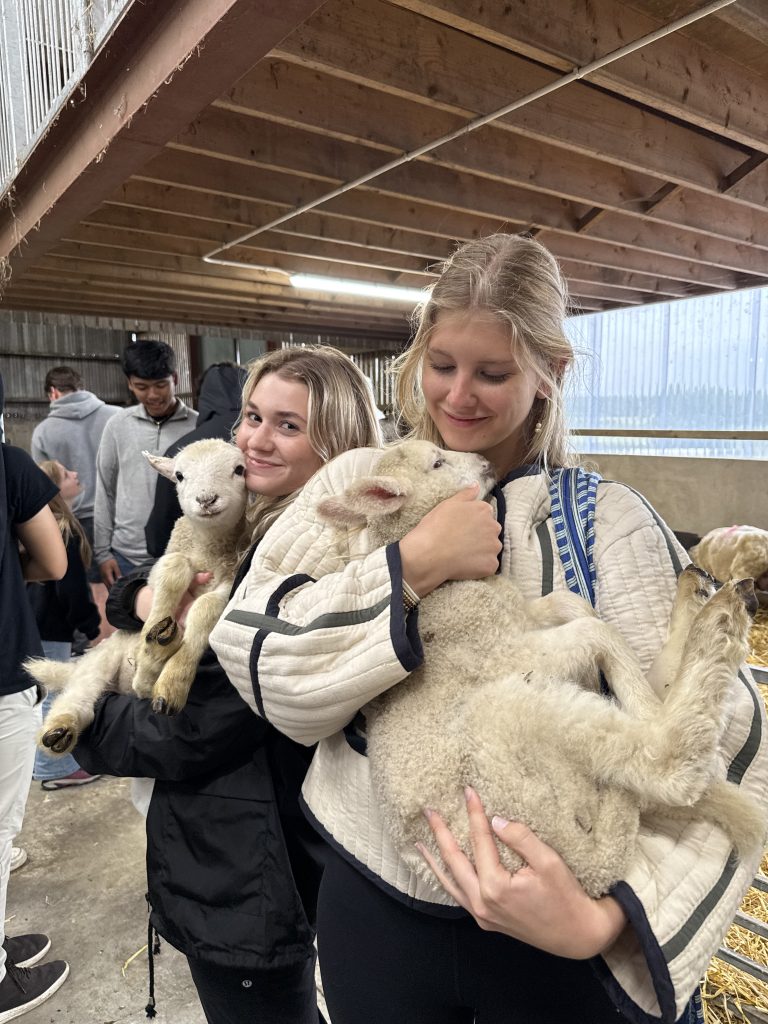
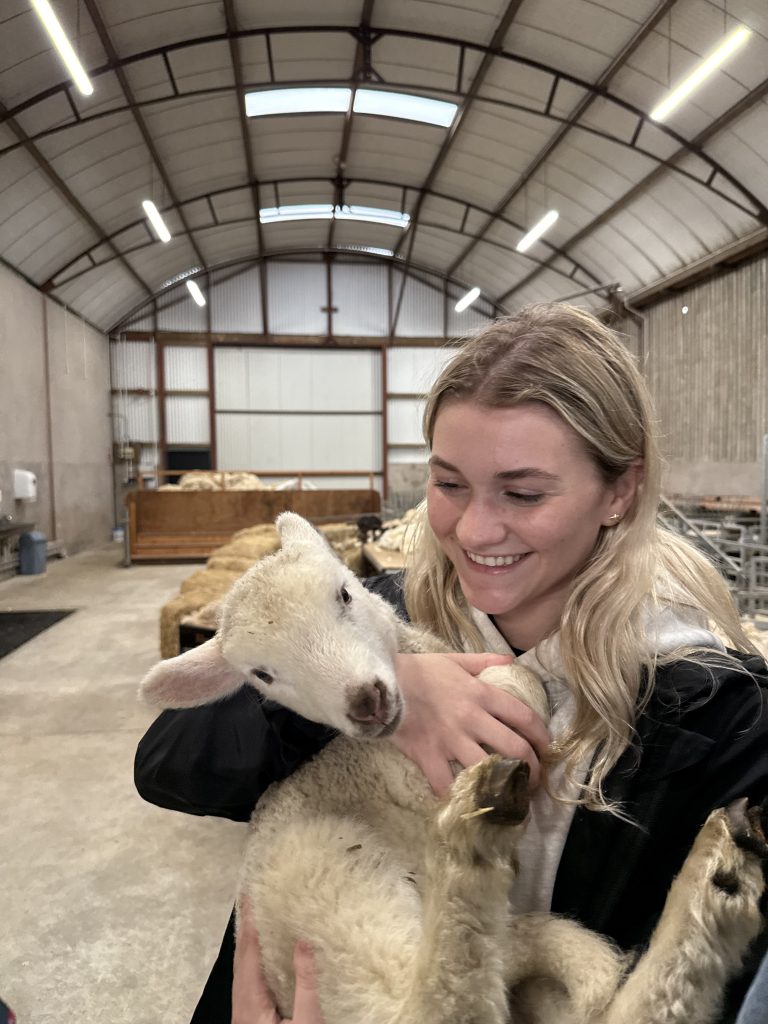
After the best few hours of my life, we headed to Derry for the night. To close out the long day, Zoe and I bought popcorn and watched terrible (but very entertaining) relatity TV before we hit the hay.
Our last day in Northern Ireland began with a walking tour of Derry (or Londonderry, according to the loyalists). We walked along the original walls of the city as the tour guide gave us a historical breakdown of everything from the Seige of Derry to the Battle of the Bogside during the Troubles.
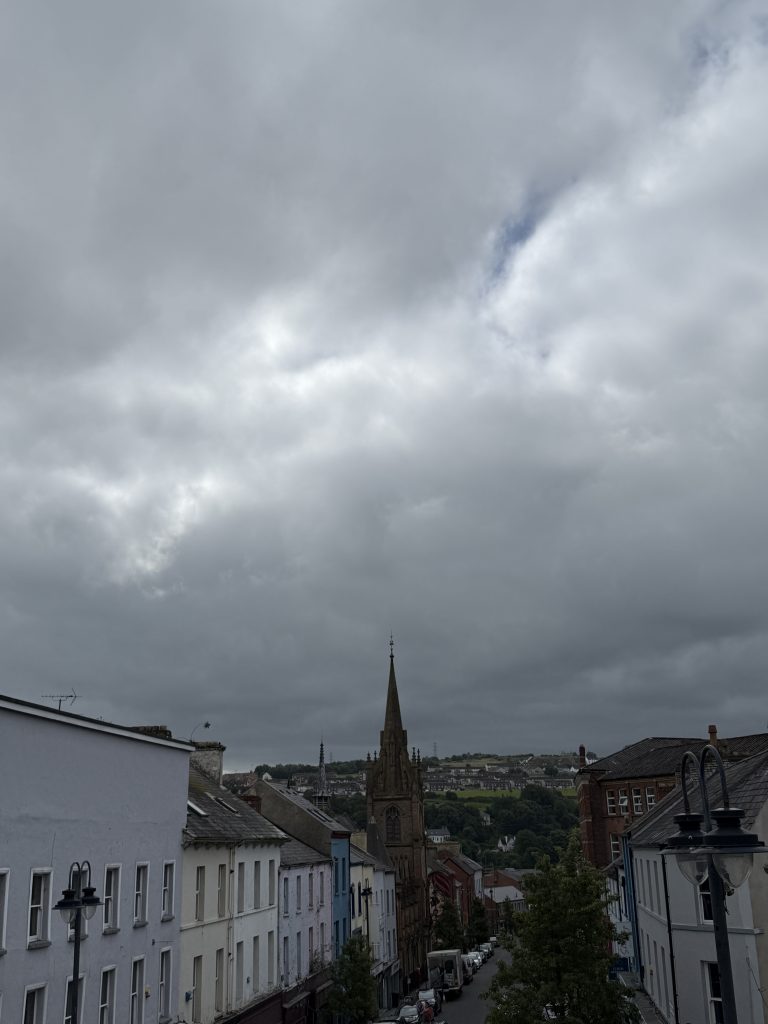
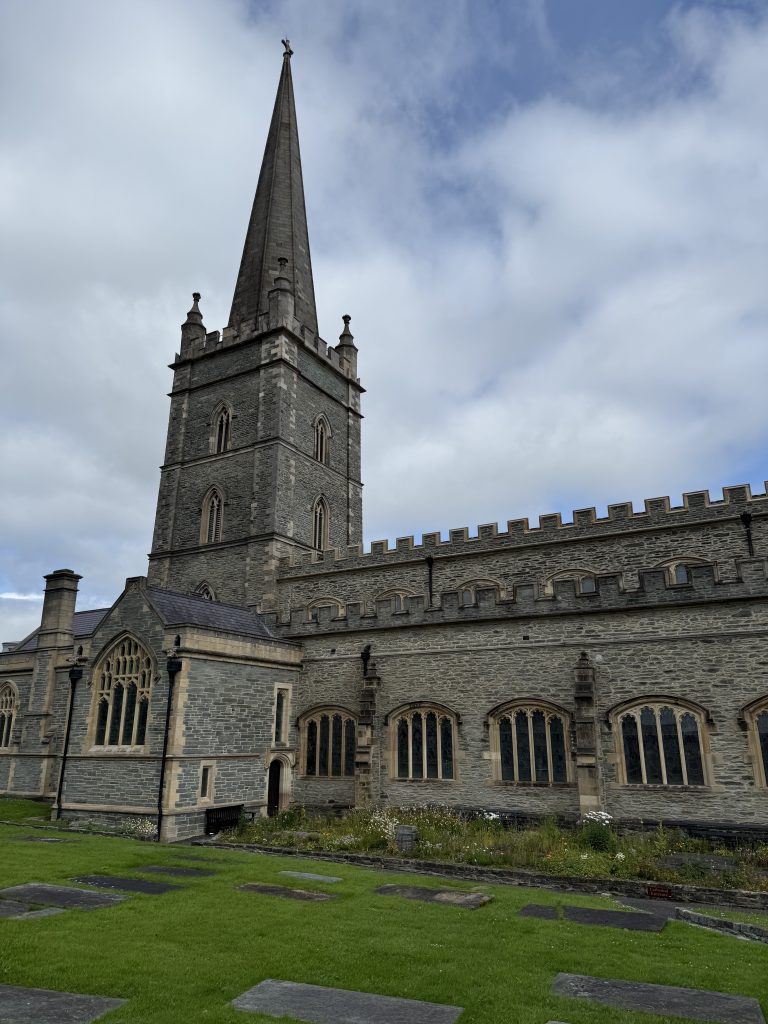
We were led across the city walls and down into the Bogside, a majority Catholic/Irish republican community that was a focal point for many of the events of the Troubles. When entering the Bogside, also known as “Free Derry,” we saw many murals commemorating the Troubles and the hardships endured by the Catholic community at the time.
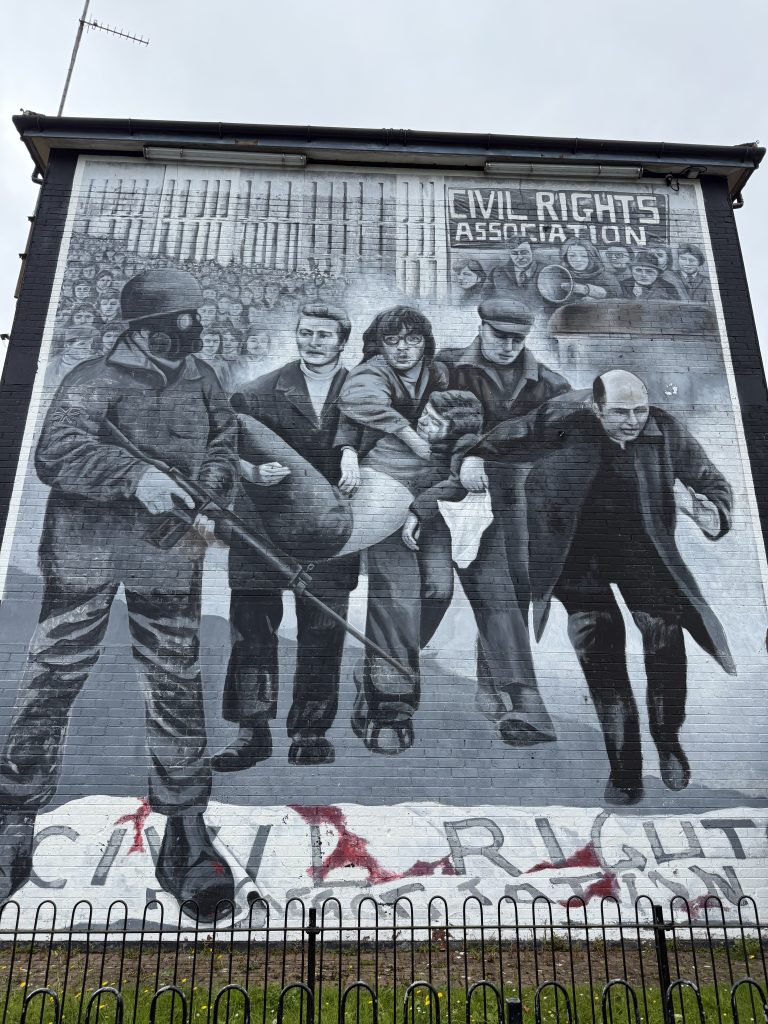
This mural of Catholic priest Edward Daly waving a blood-stained white handkerchief as a flag of truce while trying to escort the mortally wounded Jackie Duddy to safety on Bloody Sunday was the most impactful to me. Although all of the murals showed the difficulties of the time, I felt that this one powerfully humanized the tragedy, showing both the violence of the moment and the courage and compassion that persisted even in the darkest times.
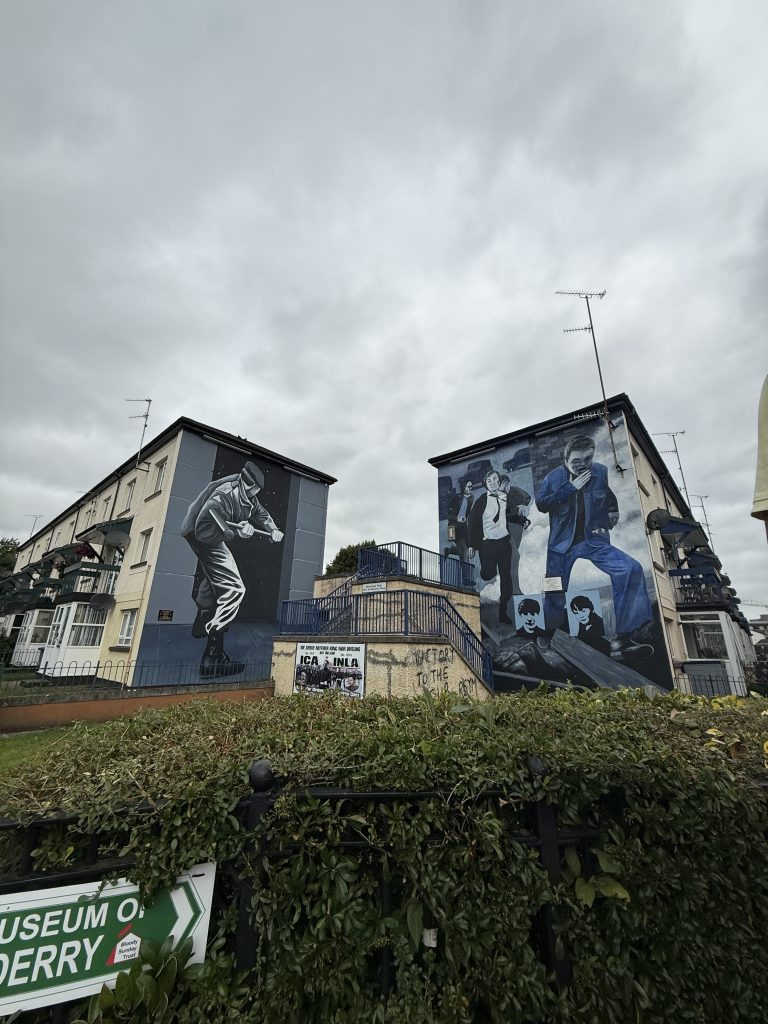
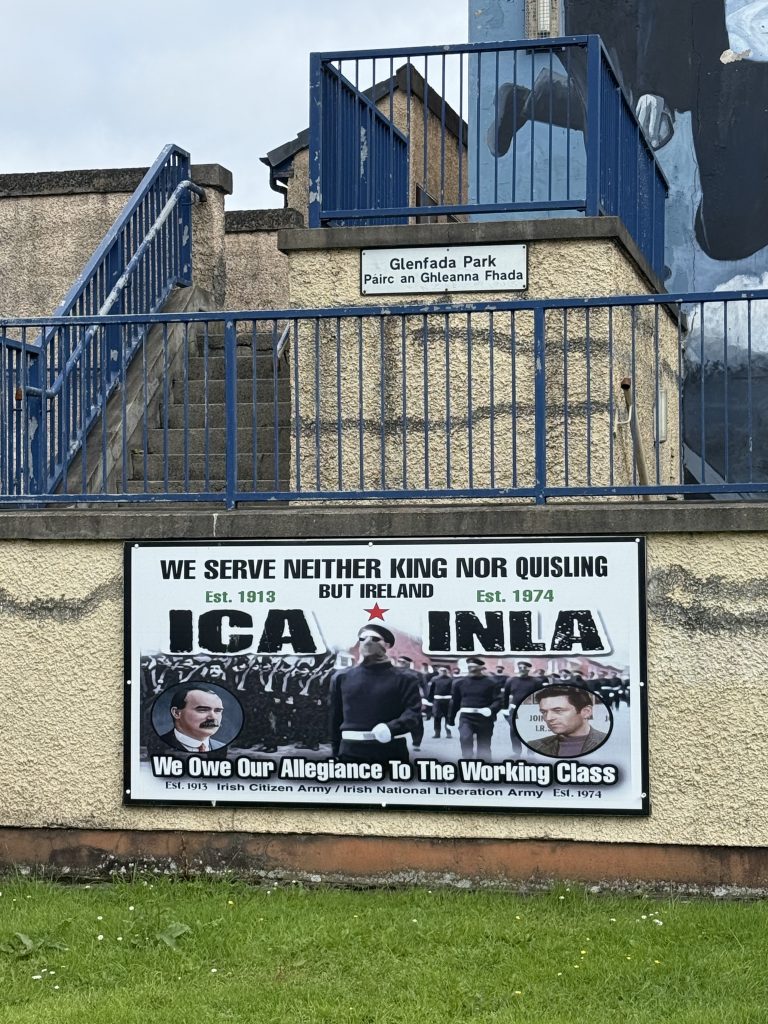
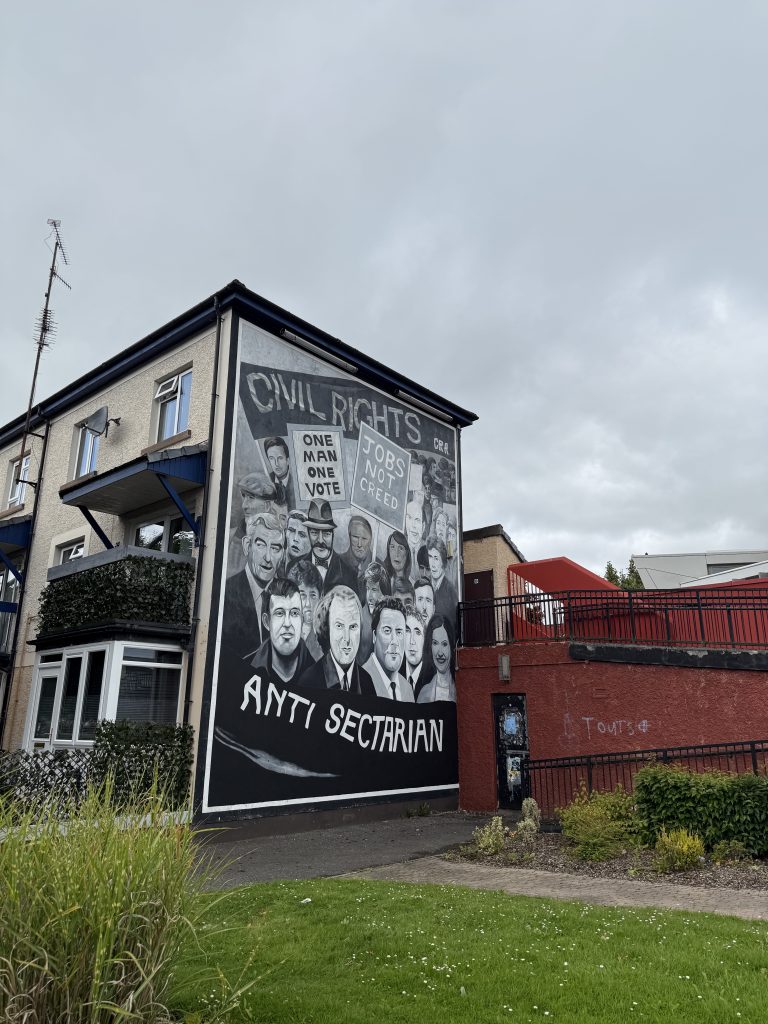
These are some more murals and posters that I found very interesting during our tour of the Bogside. The tour guide explained how the U.S. civil rights movement helped inspire the civil rights movement in Northern Ireland. Although they involved different groups and circumstances, the stories felt familiar, making the struggle for rights by the Irish-Catholic community resonate deeply.
I also noticed a lot of Palestinian flags in the Bogside, which sparked my curiosity. Of course, I have seen many of these flags both in the U.S. and Ireland, but there was a noticeable increase in Northern Ireland. Similar to the presence of Palestinian flags in Catholic communities, I also noticed a few Israeli flags in Protestant communities. When I asked the tour guide why this was the case, and why the Catholic’s stood so publically with Palestine, where the loyalists flew Isreali flags, he said “because they would do that to us if they had the chance.” He explained that it is more in a teasing way than threatening, but this really stuck with me. Especially when considering where many Catholic’s in the U.S. stand on the issue, I found it suprising how the narritive differs so drastically depending on the place and historical context.
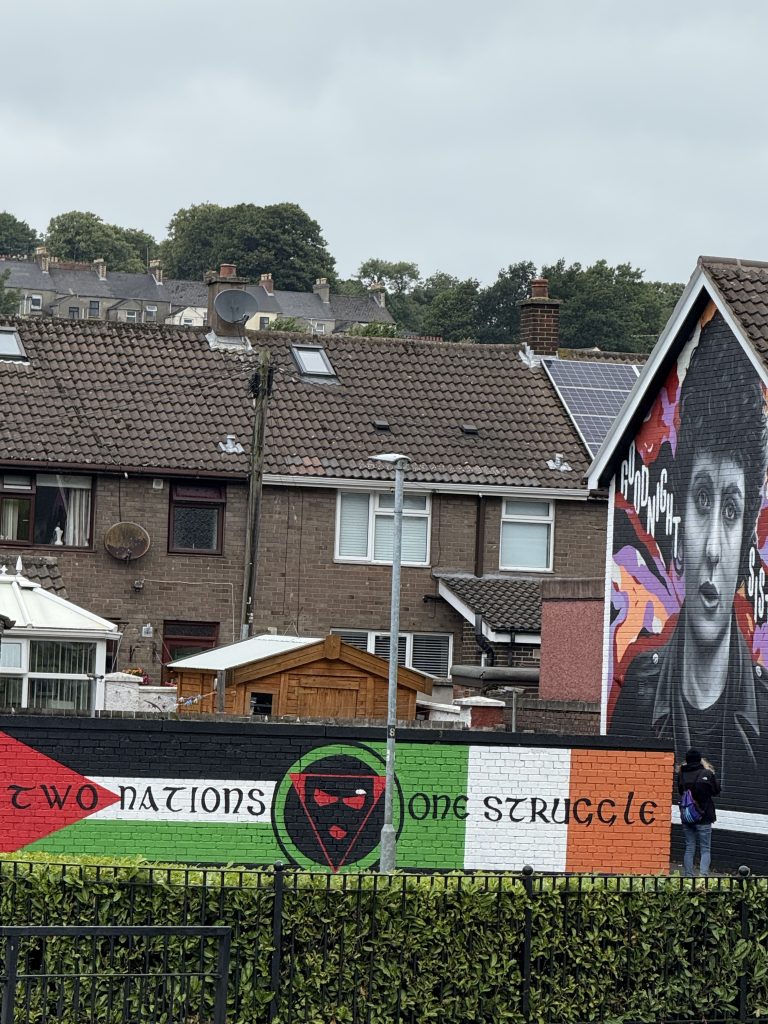
After the walking tour of the Bogside, we went to the Museum of Free Derry. I liked how the walking tour led us right there, because it felt like a continuation of the discussions and stories from our tour. It was powerful to see actual artifacts connected to what we had learned, along with video footage from Bloody Sunday and other key moments.
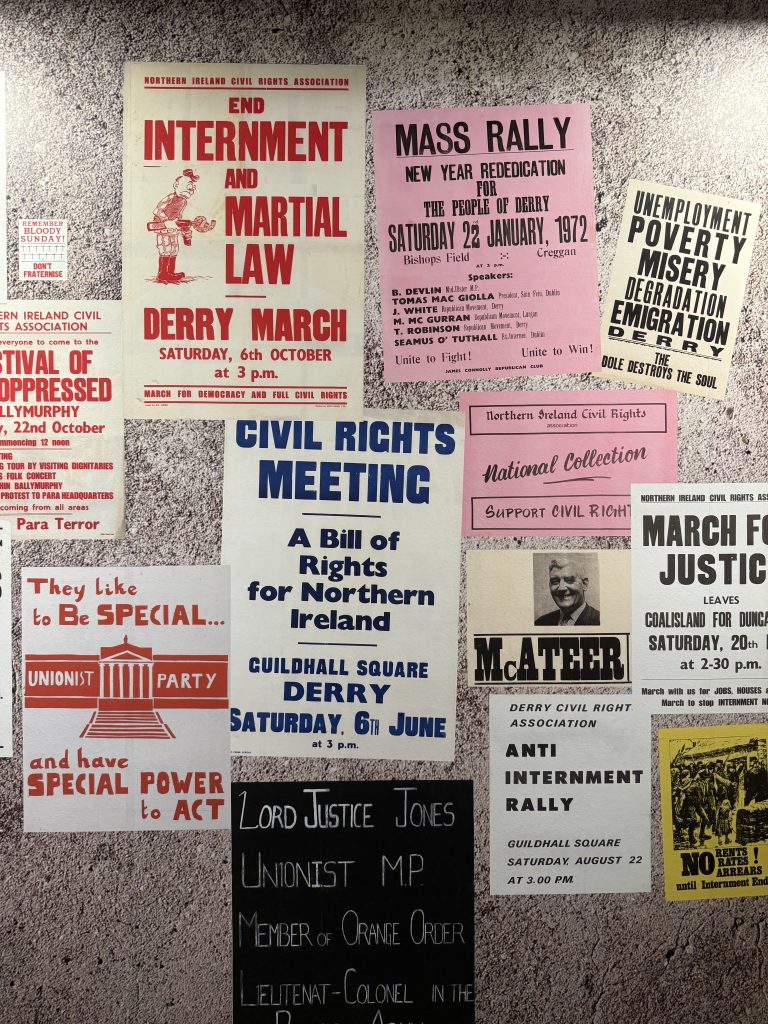
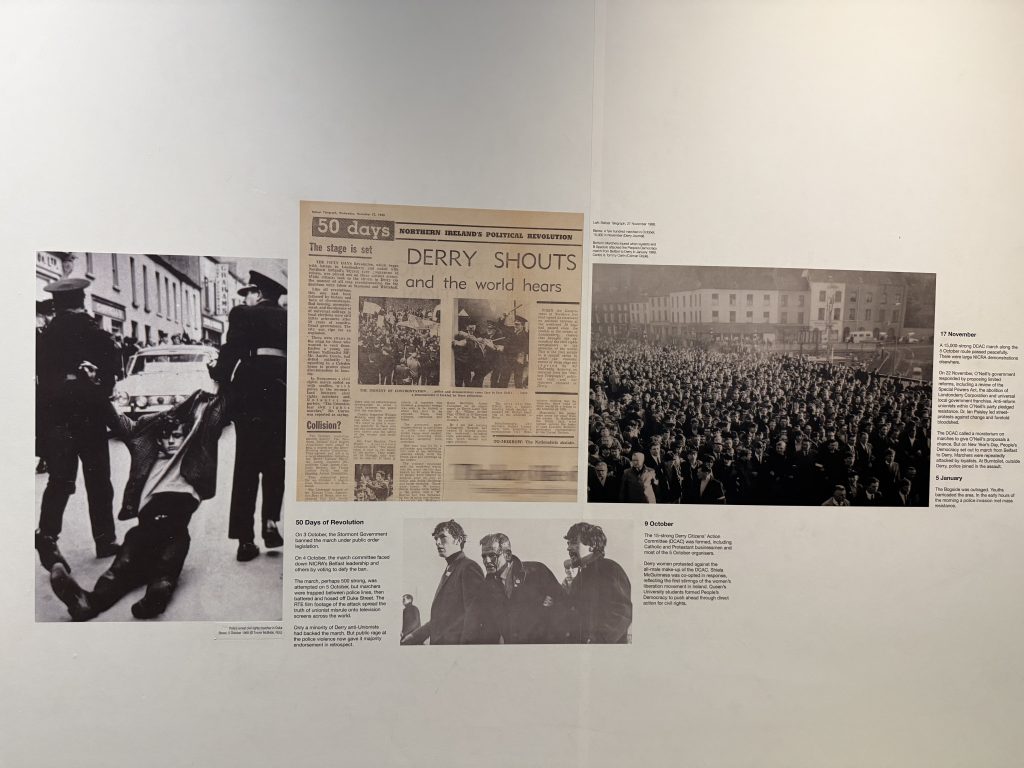
Overall, this was certainly one of the best and most impactful weeks from the trip. I had a wonderful time exploring Northern Ireland! Although this was our last weekend trip, I am excited to explore Dublin with the few weeks we have left.